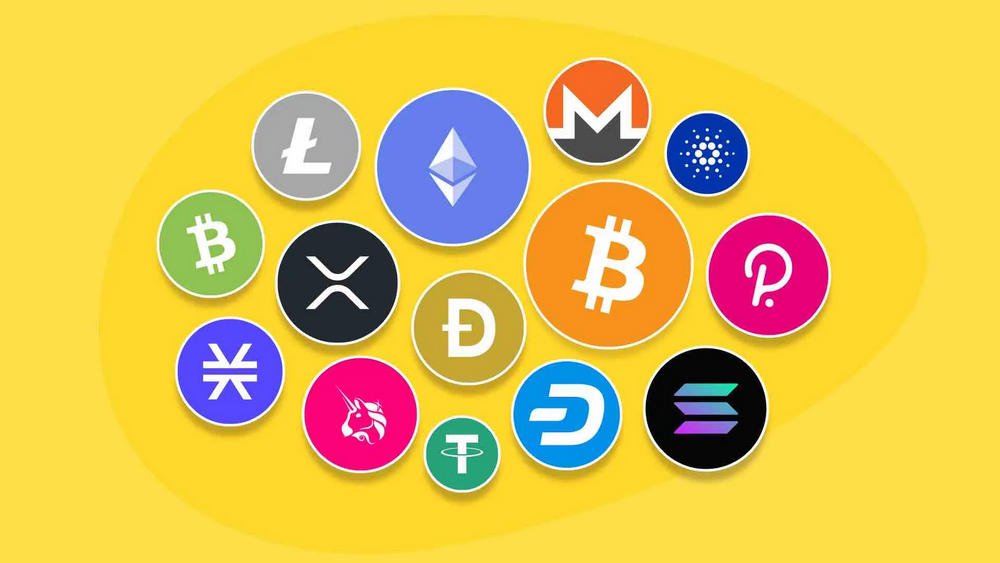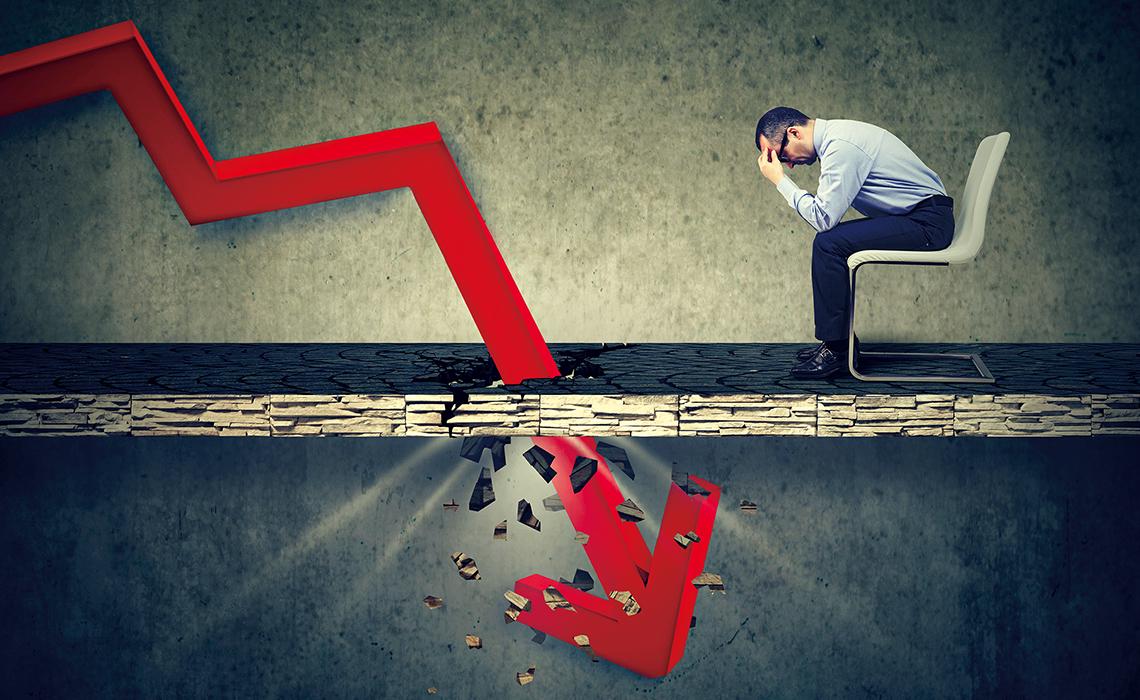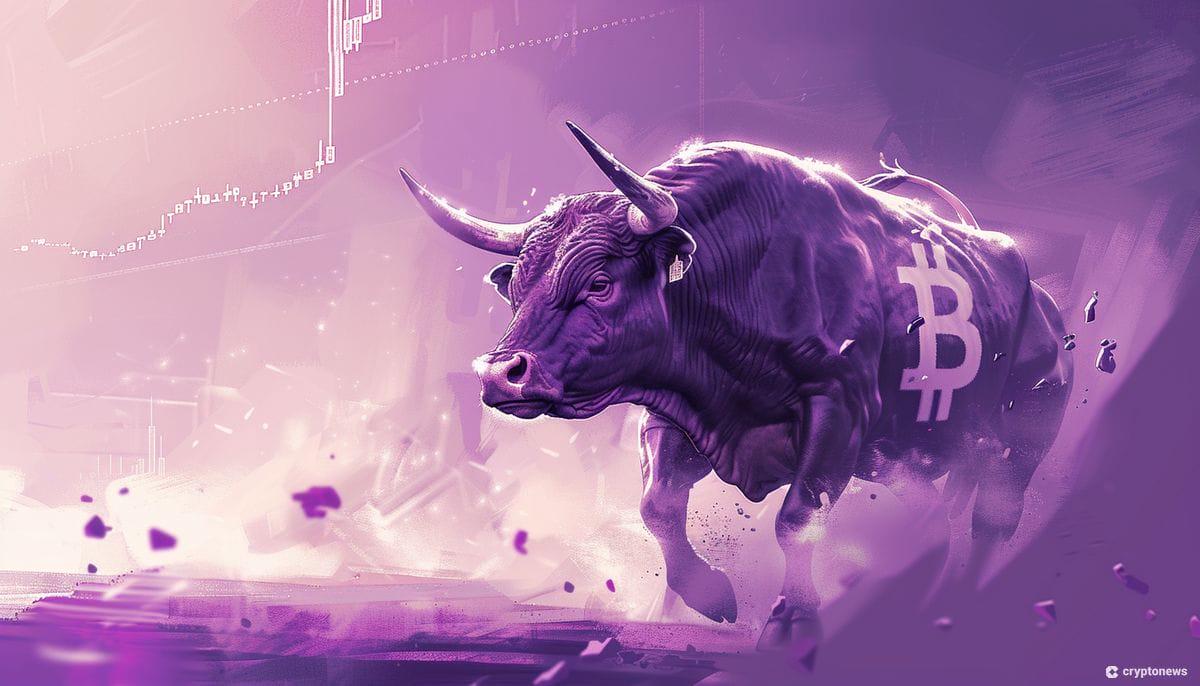-
 PA一线 · 1 小时前
Michael Saylor:明年即将生效的会计规则或使MicroStrategy满足标普500盈利要求
PA一线 · 1 小时前
Michael Saylor:明年即将生效的会计规则或使MicroStrategy满足标普500盈利要求PANews 12月22日消息,据Barrons报道,MicroStrategy董事长Michael Saylor在最近的一次采访中并未明确表示公司是否可能被纳入标普500,但他表示,鉴于对比特币的乐观看法,MicroStrategy公司明年可能因比特币持有价值的增长报告数十亿美元的季度净收入,2025年即将生效的会计规则变化可能使MicroStrategy满足加入标普500的盈利要求。
-
 PA日报 · 1 小时前
PA日报 | 至少10家公司正考虑采用MicroStrategy的比特币战略;本周NFT买家数环比上涨92.39%,交易额环比增长32.93%达3.022亿美元
PA日报 · 1 小时前
PA日报 | 至少10家公司正考虑采用MicroStrategy的比特币战略;本周NFT买家数环比上涨92.39%,交易额环比增长32.93%达3.022亿美元去中心化流动性协议THORChain发布V3版本;Wormhole DAO将于明年第一季度上线;萨尔瓦多总统已加大每日比特币购买量,中期目标是再购买2万枚;资管公司GraniteShares申请加密货币相关的杠杆ETF,以追踪MicroStrategy和Robinhood等公司。
-
 Foresight News · 1 小时前
行情下探,顶级交易员如何看待后市?
Foresight News · 1 小时前
行情下探,顶级交易员如何看待后市?卖出逃顶还是胆大抄底?
-
 Weilin · 2 小时前
传统银行入局Layer 2,德意志银行基于ZKsync构建,已测试多个用例
Weilin · 2 小时前
传统银行入局Layer 2,德意志银行基于ZKsync构建,已测试多个用例传统金融机构也开始下场做Layer2了。德意志银行正在推出基于以太坊的Layer 2解决方案,项目名为Project Dama 2,其测试版已经于11月推出,预计在明年获得监管批准后正式推出。
 Yuliya · 4 小时前
四位顶级投资人激辩:2024加密货币市场成败得失与2025预测
Yuliya · 4 小时前
四位顶级投资人激辩:2024加密货币市场成败得失与2025预测Robot Ventures、Dragonfly与Superstate的回顾与展望,BTC 2025年或将达到18万美元。
-
 金色财经 · 4 小时前
朝鲜黑客从加密平台窃取的钱都干什么了?
金色财经 · 4 小时前
朝鲜黑客从加密平台窃取的钱都干什么了?与朝鲜有关的黑客在 47 起事件中窃取 13.4 亿美元,占当年被盗总金额的 61%,占事件总数的 20%。
-
 PA一线 · 4 小时前
Wormhole DAO将于明年第一季度上线
PA一线 · 4 小时前
Wormhole DAO将于明年第一季度上线跨链协议 Wormhole 表示 Wormhole DAO 将于 2025 年第一季度上线。要参加第一次投票,W 持有者需要进行治理质押。 Wormhole 质押奖励计划 (SRP) 正在所有链 (EVM + Solana) 中进行,首期奖励池至少分配 5000 万枚 W 代币。
-
 PA一线 · 5 小时前
曾波段交易PEPE获利492万美元的某聪明钱在四小时前再度建仓4753亿枚PEPE
PA一线 · 5 小时前
曾波段交易PEPE获利492万美元的某聪明钱在四小时前再度建仓4753亿枚PEPE据链上分析师 @ai_9684xtpa 监测,「过去六个月通过 $PEPE 波段获利 492 万美金的聪明钱」四小时前又建仓了 4753 亿枚 PEPE,价值 820 万美元,均价 0.00001724 美元,目前已浮盈 14.2 万美元。12 月以有 5 个巨鲸对 PEPE「下了重注」
-
 PA一线 · 5 小时前
目前至少10家公司正考虑采用MicroStrategy的比特币战略
PA一线 · 5 小时前
目前至少10家公司正考虑采用MicroStrategy的比特币战略目前至少有 10 家公司正在或考虑采用 MicroStrategy 的比特币战略,包括人工智能公司 Genius Group等。
-
 PA一线 · 6 小时前
某鲸鱼疑似卖出2.5万枚SOL获利31.3万美元
PA一线 · 6 小时前
某鲸鱼疑似卖出2.5万枚SOL获利31.3万美元据链上分析师 @ai_9684xtpa 监测,地址 HHqC...y8Aqu 疑似卖出两个月前以 169.6 美元建仓的 2.5 万枚 SOL ,若卖出将获利 31.3 万美元。该巨鲸目前仍持有 50% 的 SOL 仓位(即 2.5 万枚),浮盈 31 万美元;这 5 万枚 SOL 最多时浮盈了 473.8 万美元。
- 加密流通市值(7d)$3,541,763,733,716Market Cap恐惧贪婪指数(近30天)
 PA一线 · 6 小时前
去中心化流动性协议THORChain发布V3版本
PA一线 · 6 小时前
去中心化流动性协议THORChain发布V3版本去中心化流动性协议 THORChain 发布 V3 版本,此次更新提供了高级互操作性和智能合约功能,包括升级至 Cosmos SDK v0.50、从 Tendermint 切换到 CometBFT、引入 Cosmos 生态系统兼容性、加入 Rujira 应用层等。
-
 PA一线 · 7 小时前
资管公司GraniteShares申请加密货币相关的杠杆ETF,以追踪MicroStrategy和Robinhood等公司
PA一线 · 7 小时前
资管公司GraniteShares申请加密货币相关的杠杆ETF,以追踪MicroStrategy和Robinhood等公司总部位于纽约 AUM 超 100 亿美元的资管公司 GraniteShares 申请新的杠杆 ETF,以追踪 Riot Platforms、Marathon Digital、MicroStrategy 和 Robinhood 等公司。这些基金将同时做多和做空。做多 2 倍的 ETF 将产生两倍于相应股票的日收益。
-
 深潮TechFlow · 7 小时前
链上用户年度报告:月度新增用户数最高达1940万,Base链贡献近7成增量
深潮TechFlow · 7 小时前
链上用户年度报告:月度新增用户数最高达1940万,Base链贡献近7成增量大多数区块链在将普通用户转化为高价值贡献者方面仍处于起步阶段。
-
 PA一线 · 7 小时前
某鲸鱼/机构从昨晚以来赎回约127万枚EIGEN并在链上出售
PA一线 · 7 小时前
某鲸鱼/机构从昨晚以来赎回约127万枚EIGEN并在链上出售从昨晚 7 点以来,他们已经有 4 个地址从 EigenLayer 质押合约中赎回 1,270,507 枚 EIGEN(502 万美元)并在链上正在出售换为 ETH 或 USDC。已经赎回 EIGEN 并转移出售的 4 个地址。前几天 EIGEN 最高涨到 5.6 美元时他们这 891.7 万枚 EIGEN 浮盈了 1765 万美元。不过现在已经跌回成本线附近。
-
 白话区块链 · 8 小时前
加密货币交易中的心理层面:心态为何如此重要?
白话区块链 · 8 小时前
加密货币交易中的心理层面:心态为何如此重要?心理关口在加密货币交易中起着关键作用,交易者通常在整数价格点附近做出情绪化决策,形成重要的支撑和阻力区,而这些关口的反应会影响市场波动和价格走势。
-
 PA一线 · 9 小时前
研究:新加坡位居全球区块链和加密货币技术国家榜首,美国排名第五
PA一线 · 9 小时前
研究:新加坡位居全球区块链和加密货币技术国家榜首,美国排名第五ApeX 最近的一项研究列出了区块链和加密货币技术领域的十大领先国家,新加坡位居榜首。该研究使用综合指数对各国进行评估,该指数通过三个核心指标反映区块链的发展和采用情况:区块链专利、区块链技术就业岗位和加密货币交易所数量。
-
 PA一线 · 9 小时前
本周NFT交易额环比增长32.93%达3.022亿美元,买家数环比增长92.39%
PA一线 · 9 小时前
本周NFT交易额环比增长32.93%达3.022亿美元,买家数环比增长92.39%以太坊网络 NFT 交易额飙升至 1.999 亿美元。在过去七天内增长了 73.56%。比特币网络 NFT 排名第二,交易额下降 23%,为 3970 万美元。不过,该网络的用户参与度增长良好,买家数量达到 38,987 人。Solana 网络以 2990 万美元的交易额巩固了第三的位置,环比增长了 5.14%,共有 104,958 名买家,环比增长 108.45%。
-
 PA一线 · 9 小时前
Arthur Hayes从币安提出785万USDC,预计昨日转进币安的700万枚ENA已售出
PA一线 · 9 小时前
Arthur Hayes从币安提出785万USDC,预计昨日转进币安的700万枚ENA已售出链上分析师余烬监测,约 30 分钟前,Arthur Hayes 从币安提回地址 785 万 USDC,预计昨夜转进币安的 700 万枚 ENA 已经以 1.12 美元的均价售出。
-
 PA一线 · 9 小时前
路透社:美国计划将比特大陆关联的AI公司Sophgo列入黑名单
PA一线 · 9 小时前
路透社:美国计划将比特大陆关联的AI公司Sophgo列入黑名单据路透社援引知情人士报道,拜登政府计划将比特大陆关联的人工智能公司 Sophgo 列入美国商务部的限制贸易名单,因该公司的台积电制造芯片被非法纳入华为的人工智能处理器。
-
 PA一线 · 10 小时前
萨尔瓦多总统已加大每日比特币购买量,中期目标是再购买2万枚
PA一线 · 10 小时前
萨尔瓦多总统已加大每日比特币购买量,中期目标是再购买2万枚萨尔瓦多总统高级比特币顾问 Max Keiser 表示,总统 Bukele 已加大每日比特币购买量,中期目标是再购买 2 万枚比特币。
更多内容 Dec . 22
Dec.22



































